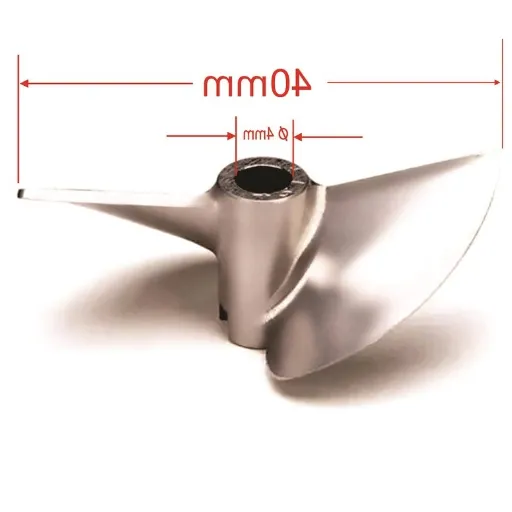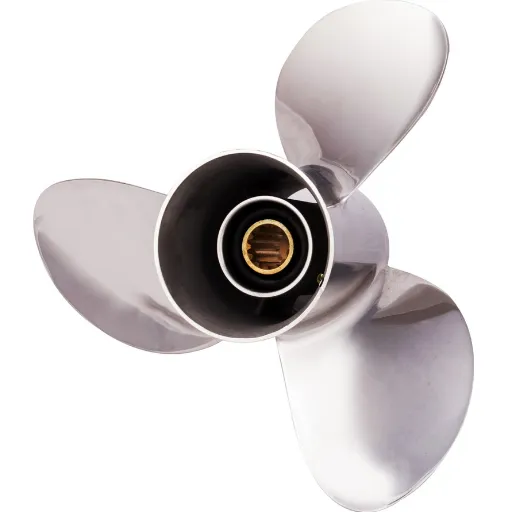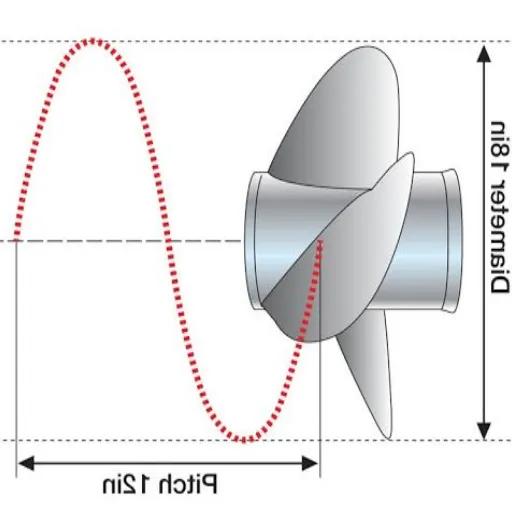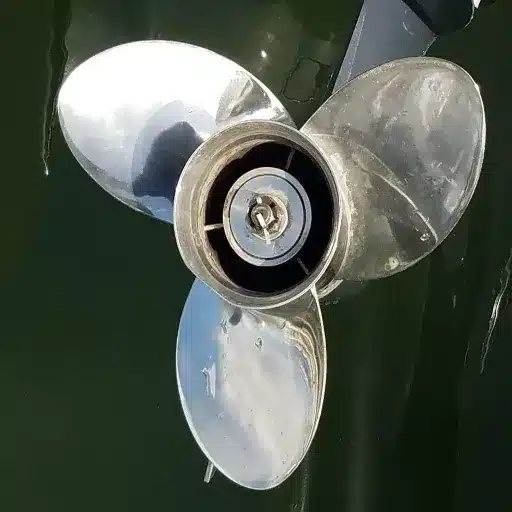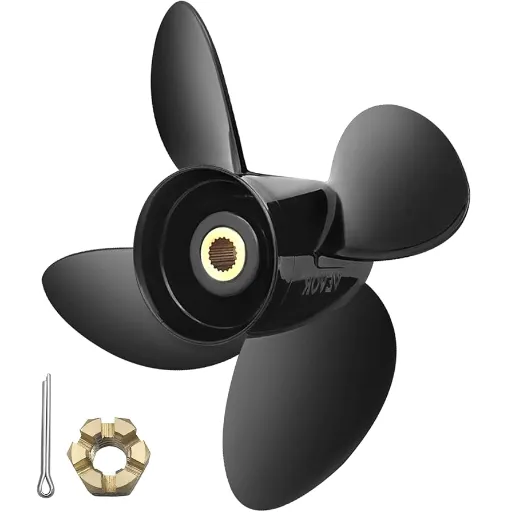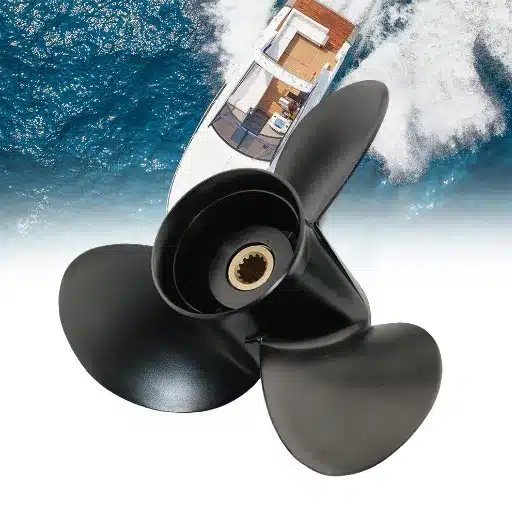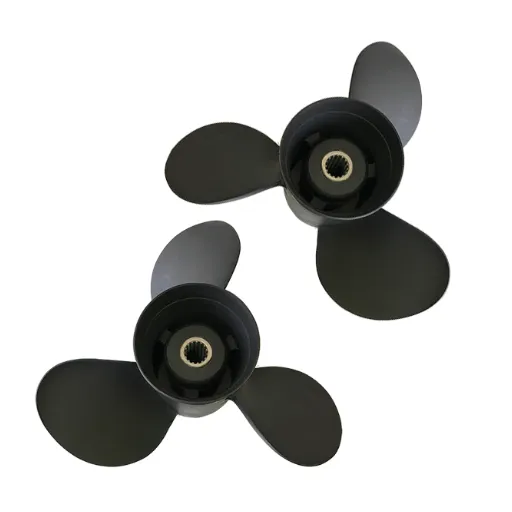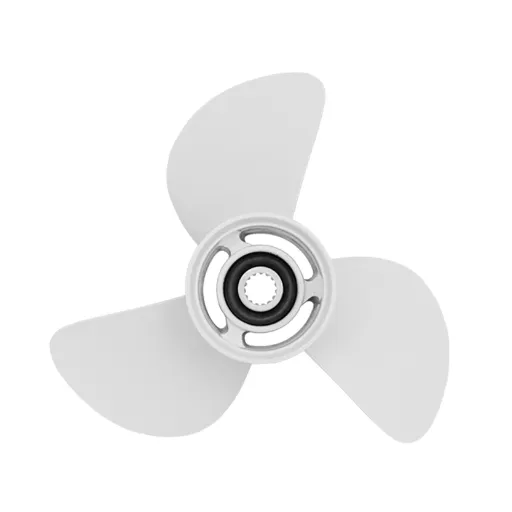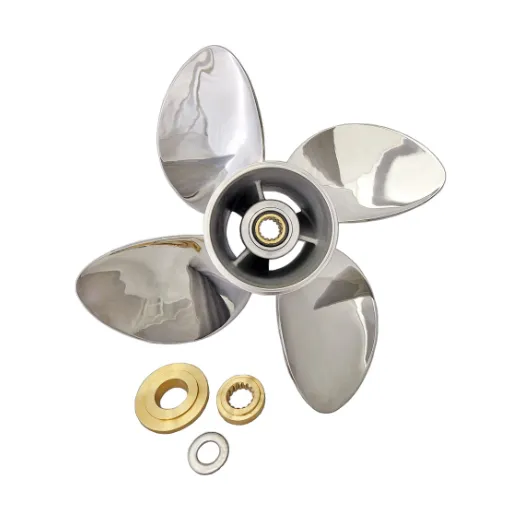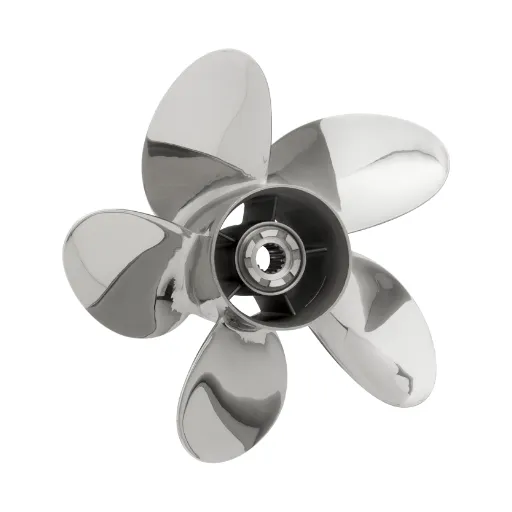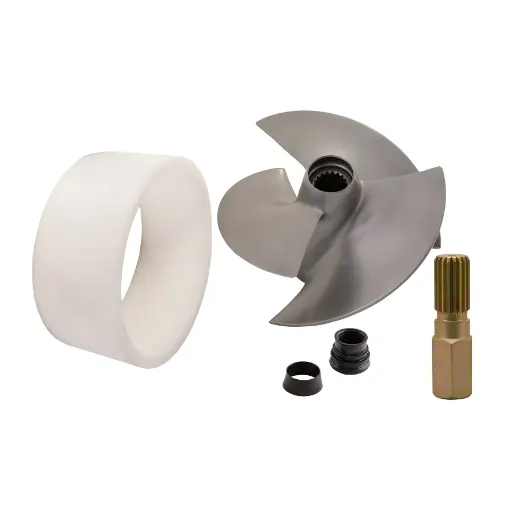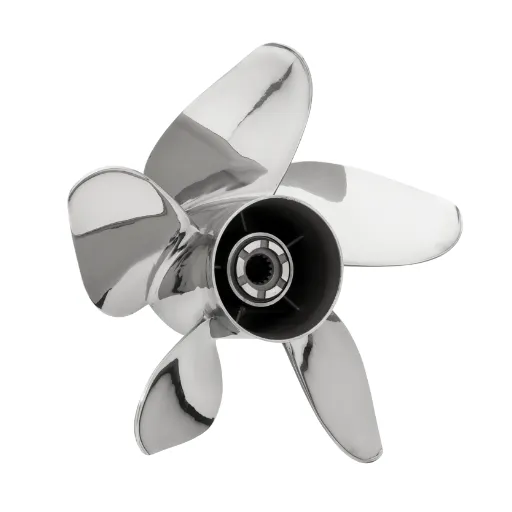The right propeller for any boat will uplift her performance, will enhance fuel economy, and, above all, deliver an overall extraordinary boating experience. However, with a thousand options offered on the market today, it can easily become dizzying trying to determine the propeller best suited to one’s specific needs. The boat propeller calculator then comes to your rescue. This innovative idea eliminates the element of guesswork, helping one find the ideal propeller based on the boat type, engine power, and usage. In this guide, we take you from start to finish on everything you need to know about choosing the best boat propeller calculator in 2025, equipping you with the knowledge to make an informed decision. From seasoned enthusiasts to novices, the article will provide you with essential takeaways to optimize your craft.
Understanding Propeller Basics
What is a Boat Propeller?
A boat propeller is a mechanical contraption whose purpose is to convert engine power into thrust, thereby enabling a boat to move through the water. It usually consists of a central hub around which blades are angled. These blades revolve under the power of the engine. The angle and shape of the blades (collectively known as pitch) determine how much water the prop can push and with what efficiency it can move forward or backward. Speed, fuel consumption, and maneuverability become the very essence of how the propellers define a boat.
Modern boat propellers are manufactured using strong materials such as stainless steel or aluminum to resist corrosion and withstand the intense water pressure. They come in various sizes and configurations for different boat types, engines, and load requirements. A propeller’s efficiency is dependent on its diameter, pitch, number of blades, and design. In short, knowing these will help you choose the correct propeller for your watercraft and use it for the best possible performance in different operating conditions. As a result, further development in propeller technology equips the boaters with greater efficiency and durability.
The Role of Propeller Size in Performance
A crucial factor in the performance characteristics of a boat is the propeller size. The diameter and pitch of the propeller usually define it. With a larger diameter, the propeller moves more water and can thus exert thrust at low speeds on heavier boats. Instead, propellers with smaller diameters may be suitable for lighter boats that require high-speed performance.
The pitch, referring to a measurement of how far a propeller would theoretically move in one revolution if there were no slippage, is also essential for performance. The lower the pitch of a propeller, the faster it accelerates and pulls away; conversely, a higher pitch allows for higher finishing speeds, but acceleration must indeed suffer in doing so.
Research and innovation in propeller technology have led to designs that prioritize increasing hydrodynamic efficiency, reducing cavitation, and enhancing fuel consumption. For example, propellers with various numbers of blades and made of materials such as stainless steel or composites may provide specific advantages to meet the different requirements of boating. These advanced designs emphasize the importance of selecting the right size and type of propeller to match the engine rating and the intended use of the boat.
Common Types of Propellers and Their Uses
Boat size, horsepower, and activities are the deciding factors in selecting the propeller type. Most common types and their uses are briefly summarized below:
| Propeller Type | Key Features | Best For |
|---|---|---|
| Three-Blade Propellers | Offer the best compromise between speed and efficiency. Provide decent top-end speed and smooth running. | General-purpose boating, recreational cruisers, and smaller fishing boats |
| Four-Blade Propellers | Better acceleration and mid-range performance with improved handling and thrust in choppy waters. | Water sports like wakeboarding or boats under full-load conditions |
| Cupped Propellers | Feature blades with a forward edge that provides additional grip, reduces slippage, and enhances performance in turns. | Racing and high-speed recreational boats |
| Stainless Steel Propellers | Renowned for durability and efficiency. Remain unaffected by deformation, ensuring better performance under stress. | High-impact or offshore environments, boats requiring long lifetime |
| Composite Propellers | Lightweight and inexpensive. Do not corrode and can be easily repaired. | Small boats or freshwater environments, casual boat owners |
💡 Key Insight: Being knowledgeable about their types enables the boating community to make better vessel performance decisions, maintain the equipment, and ensure its efficiency and reliability in its active state. The right propellers paired with the right boat for a given application go a long way towards reducing fuel consumption; they also improve handling.
The Importance of a Propeller Calculator
How a Propeller Calculator Works
The propeller calculator analyzes the boat’s weight, engine horsepower, RPM, and desired speeds to suggest a suitable propeller size and pitch. The calculator utilizes exact algorithms for those parameters to provide the user with practical recommendations. Employing modern technology, the application provides in-depth data and information to recommend a propeller that suits a specific vessel, enabling it to perform efficiently and achieve optimal fuel economy, thereby enhancing the boating experience. Unquestionably, the proper use of a propeller calculator can eliminate guesswork and reduce the time required to select.
Benefits of Using a Propeller Selector Tool
The propeller selector tool guides users through the options to determine the ideal propeller for a vessel, providing valuable data support and details to back the selection. The tool is designed with various inputs, including boat type, engine power, hull design, and usage, ensuring that user needs are well-matched against the recommendations provided. Thus, there is less human interference, allowing owners to choose what works best for them. Considering proper options, good propellers will reduce friction during operation, enhance maneuverability, and improve overall control of the vessel.
Consequently, the tool ensures that essential factors such as fuel efficiency and engine life are factored in. With the right pitch, diameter, and material selections, a propeller can reduce fuel consumption and minimize unnecessary wear on the engine. This, in turn, increases savings for the customer and lessens the environmental impact, consistent with the principles of sustainable boating. The propeller selector program benefits from a user-friendly interface that allows boaters, from confident novices to experienced users, to make informed choices. Precise recommendations will be provided by the program, serving as an indispensable tool for anyone interested in maximizing their enjoyment of boating.
Key Metrics to Input for Accurate Results
When using the propeller selector tool, specific key metrics must be provided to help pinpoint the recommendations accurately. The first key metric is weight, which is the primary deciding factor in the performance of a propeller. When entering the exact weight, one must consider the weight of passengers, fuel, and gear to allow the tool to assess the load that the propeller will have to balance. The other inputs consist of engine type and horsepower. The specifications are tailored to the power output range and operating range of the engine, thereby improving efficiency and performance.
Also, an intended use is highly relevant in prop selection. Is it for cruising or fishing, or water sports or a hybrid of these uses? The system then uses these inputs to recommend a propeller optimized for the associated conditions. You should also input the top boat speed and cruising speed to get a refined selection. And—the older one’s features are essential, including pitch, diameter, and material, especially if the user is setting out to improve performance or overcome issues of cavitation or poor fuel economy. When a boat owner enters these specifications into the input, they are assured of getting a propeller that will give the boat the best performance and longevity, which, in turn, improves every positive aspect of the boat owner’s boating experience.
Finding the Right Propeller for Your Boat
Factors in Choosing Propeller
Choosing the right propeller for your boat should involve considering several variables for selection and performance. You should consider the diameter and pitch of propeller sizes. The diameter would be the thrust force generated, whereas the pitch would be determined by the distance traveled by the boat in one rotation of the blade. Larger diameters may be needed for low-speed boats that require high thrust, while a steep pitch might be well-suited for higher speeds.
Another consideration is the number of blades on the propeller. The more blades there are, the smoother it generally runs and the better acceleration it provides, a characteristic that is favorable for water sports or large vessels. Fewer blades usually mean a higher potential speed, which is appropriate for smaller, faster boats. Choices of materials can be made, with stainless steel offering strength and speed, and aluminum providing a more affordable alternative.
Other considerations include horsepower, boat weight, and the intended use of the boat (water sports, fishing, or cruising). A mismatch in any of these parameters is inefficient, as it can result in power loss, fuel wastage, and engine damage. By noting down all these, a boater is ensured an ideal selection of propeller in terms of fuel efficiency, performance, and engine life.
Data-Oriented Decision-Making
Making decisions based on defective data surely jeopardizes all kinds of applications, including propeller selections for boats. Advanced tools and sources provide comprehensive details, including performance charts, material specifications, and real-world testing results. Upon analyzing the data, the user can develop a deeper understanding of how factors such as blade pitch, diameter, and material affect efficiency and performance. For example, digitized simulation models enable users to forecast the effects of various propeller setups under specific conditions, thereby minimizing the need for a trial-and-error approach. Using dependable data reduces the wastage of time and resources, ensuring better outcomes by correlating key parameters with individual requirements.
Understanding Prop Slip and Its Impact on Speed
The prop slip is the distance theoretically traveled versus the distance actually covered by the propeller with every revolution. Convert this into a percentage, taking into account factors such as propeller design, engine power, and water resistance, among others. In essence, someone must understand slip to optimize performance; too much slip diminishes efficiency, thus combating speed. A user can calculate slip, given pitch, engine RPM, and load conditions, whilst also being able to correct it. The combination of modern instruments and detailed data enables the precise measurement of slip, thereby helping to align the engine with the prop as closely as possible to achieve the maximum speed with the least possible loss of energy.
Case Studies: Successful Propeller Selection
Real-Life Applications of Propeller Calculators
1. Efficiency Upgrade for a Commercial Fishing Vessel
In a commercial fishing operation, a company sought to reduce fuel consumption and operating expenses for its fleet. The engineers applied the propeller calculator by entering the data of the vessel’s engine power, displacement, and operating conditions. The tool suggested switching to a four-blade, highly efficient propeller with optimized pitch. Since the change, the company has enjoyed a 15% reduction in fuel costs, as well as a higher cruising speed and considerably lower operating costs while maintaining productivity.
2. Recreational Boating Performance Upgrade
Recreational boat users complained that their boats were unable to reach the desired cruising speed, along with high fuel consumption during long cruises. Using a propeller calculator, the user inputted engine type, boat weight, and usage conditions. The calculator suggested that the propeller with a higher pitch was best suited for their high-speed operation. Post-installation, the proprietor witnessed improvements in acceleration, handling, and top speed of at least 10 percent, resulting in a significantly enhanced boating experience.
3. Improvement of the Stability of a Freight Transport Vessel
The freight transport company moving heavy cargo across enormous distances found it challenging to strike a compromise between speed and stability.” Using the propeller calculator, the engineers at this company began calculating various parameters, including load weight, draft depth, and engine power output. Upon analysis, the outcome suggested a sturdy and well-balanced propeller with a lower pitch to ensure reliable thrust and reduce slippage. Following this, efficiency and stability were significantly improved, cargo integrity was protected, and fuel efficiency increased by 12%, allowing the company to meet its delivery deadlines with relative ease.
4. Competitive Sailing Optimization
A team competing at a National Sailing Championship used a propeller calculator to improve the performance of their vessel. By inputting specifications such as hull shape, wind conditions, and required RPM ranges, the software suggested a small and lightweight propeller that effectively reduces drag and provides more thrust. The resultant change provided the ship with better maneuverability and consistent gains in speed, thereby giving the team a competitive advantage and helping them attain a podium finish.
✓ Success Summary: These real-world case studies exemplify the use of propeller calculators in the possible applications that must be optimized within related boating and maritime activities. By providing site-specific recommendations and actionable insights, these tools enable users to earn quantifiable improvements in speed, efficiency, and performance.
Interpreting the Results from Different Scenarios
Across various scenarios, advanced tools and reliable data sources are essential to ensure that the results are not only accurate but also actionable. By applying modern analyses, one can model how various environmental conditions, such as wind resistance, current direction, or load weight, impact performance parameters like speed and fuel efficiency. With the aid of various operational conditions, users can identify the optimal configurations according to their specific requirements.
Moreover, employing up-to-date information enables the identification of trends and the evolution of strategies over time. For instance, intricate datasets may confirm how slight design or operational practice modifications lead to tangible efficiency gains. This knowledge enables informed decision-making based on facts, while continuously enhancing performance in concrete terms, without relying on conjecture.
By combining tools, user feedback, and continuous monitoring, it has become the most effective way to strike a balance between extreme performance levels and operational sustainability, thereby enabling practical and replicable solutions for various applications.
Learning From Common Mistakes in Propeller Selection
Inappropriate propeller selection leads to poor performance, reduced efficiency, and conditions that may even result in equipment damage. Probably the most frequent mistake made in examples would be not matching the size and pitch of the propeller to the power of the engine and its intended operating requirements. If the propeller is too large or has improper pitch, it puts undue stress on the engine, resulting in decreased fuel efficiency and increased wear and tear over time. On the other hand, if the propeller is smaller, it does not allow the engine to use all its power; hence, the top speed and performance decrease simultaneously.
Neglecting to specifically consider the use to which the vessel is to be put forms one widespread error made by the designers. For instance, boats suitable for watersports generally require a particular set of propeller patterns, which are usually different from those that suit boats intended for fishing or cruising, thereby hindering acceleration, maneuverability, and the capability to withstand loads. If we simply ignore the various other conditions, such as altitude, expected load weights, and water conditions, the outward performance of the propeller might be seriously compromised in actual application.
With advanced data analysis tools and selection models and methods being now refined, it has become possible to make a much finer determination of what propeller characteristics would suit a given installation. Such an approach, utilizing advanced software and manufacturer guidelines, can help specify the exact propeller required for the desired performance profile. Frequent testing and evaluation will reveal any signs of wear or malperformance, allowing adjustments to be made in time to avoid long-term efficiency and reliability penalties.
2025 Trends in Propeller Technology
Innovative Designs for Enhancing Performance
When I examine the emerging trends in propeller technology for enhanced performance, it becomes clear that innovation is driven by efficiency, sustainability, and adaptability. One of the most exciting advancements has been the development of biomimetic designs inspired by nature. By examining marine creatures, such as whales or fish, engineers are designing propellers with unusual shapes and blade geometries that minimize drag and cavitation. This not only optimizes fuel consumption but also reduces the environmental footprint through noise and emissions, an issue that is near and dear to the hearts of the recreational and commercial marine industries.
Another development that highlights this industry is the growth of adaptive propellers. Using materials such as shape-memory alloys or sophisticated composites, manufacturers are producing blades that can change pitch or alter their shape in real time, depending on speed and water conditions. Such excellent adaptability enables vessels to optimize their performance over a wide range of operating conditions, from low cruising speeds to high-power operations. These smart propulsors are increasingly integrated with digital monitoring systems for precision adjustment and predictive maintenance, further enhancing their efficiency and reliability.
Finally, 3D printers are changing the propeller design and fabrication processes. Rapid prototyping enables the design of intricate and custom shapes that were previously impossible with conventional techniques. The wider use of 3D-printed propellers will usher in greater innovation and cost-effectiveness in the marine industry. These advances in design and technology shall certainly secure the future of propeller performance, providing solutions that are environmentally friendly and highly efficient.
Impact of Engine Technology on Propeller Selection
According to my understanding, the evolution of engine technology is pivotal in the development of propeller design and selection. With the advent of such an advanced engine system, more power is devised, hence more customizable, and this sets the criteria for the type of propeller that can maximize its performance: examples being of today’s marine engines with higher torque ratings and improved efficiency, requiring more precise propellers that have special materials and optimized blade geometry. These include the technological integrity to transmit the engine power to the propulsion system adequately with minimal energy loss, thereby achieving optimal performance for the vessel.
Another aspect that I consider to be rather important, and this is how modern engine control systems such as electronic control modules (ECMs) impact the propeller dynamics. These innovations coordinate fuel consumption and power output adjustments more accurately and thus require propellers that can respond to changing operating conditions. For instance, the variable-pitch propeller is an example where the blade angle is adjusted, depending on the required load at a given speed during vessel operation. These advanced engines, together with adaptable propeller designs, will not only enhance performance but also favor their durability in the long run, as well as impose lower maintenance costs.
I believe that engine technology and propeller symmetry should be designed to meet both performance and environmental requirements. Engine technology constructors have increasingly paired their technologies with propellers engineered to maximize fuel efficiency and reduce carbon footprints under pressure from emissions and the need for sustainable operations. Keeping abreast of engine system development enables operators to ensure that propeller designs are efficient and also conform to current eco-friendly standards, thus fostering innovation in the marine industry.
Propeller Calculator: What Lies Ahead?
When I think of the future of propeller calculators, I envision technological advancements bringing about increased precision, user-friendliness, and customization to meet the evolving needs of maritime professionals. Yet, the most significant development would be the fusion of AI with machine learning algorithms. Such technologies will consider massive databases of vessel specifications, operating conditions, fuel-burning behavior, and other relevant factors, and provide recommendations for propeller selection and optimization with utmost accuracy. Thus, operators can expect calculators that recommend an ideal propeller while monitoring real-time performance data for optimization across varying operating scenarios.
Cloud solutions are also anticipated to account for the next phase of propeller calculators. They will offer an environment where tools and data can be accessed from any location, enabling smooth collaboration among teams, ship designers, and operators. The connectivity to the cloud will also provide an opportunity for continuously updating and improving the application landscape, ensuring that end users are never stuck with outdated versions, including any changes in international standards and regulations. Similarly, sustainability will remain a paramount concern in the business. Thus, future iterations of propeller calculators will likely incorporate enhanced environmental impact assessment tools that will allow operators to make choices compatible with international decarbonization targets and regulations.
Looking ahead, I believe this synergy between digital twin technology and propeller calculators is ushering in a new era in efficiency measurement and realization. Digital twins will enable operators to simulate different propeller designs and configurations in virtual environments before making any changes in the real world, which, by the way, is cost- and time-prohibitive through trial and error. It is thrilling to think about how these new innovations will evolve and further refine operations at sea, with an emphasis on efficiency, sustainability, and environmentally friendly shipping.
Reference Sources
- Mercury Marine Prop Selector – A tool to find the best propellers for various marine engines, enhancing performance.
- Boat Prop Calculator by Boater Input – Helps determine how changes in pitch size impact a boat’s top speed.
- West Marine Prop Selector Tool – Offers expert recommendations for selecting the perfect propeller to improve efficiency.
- Vicprop Free Propeller Sizing Calculators – Provides calculators to determine power, gear ratio, and propeller size combinations.
- Overton’s Propeller Selector Tool – Allows users to search for propellers by manufacturer, horsepower, model, and year.
- Find more info now.
Frequently Asked Questions (FAQs)
How do I use the boat propeller sizing calculator to select the best propeller?
If you want to find the right-sized prop for your boat, input your craft’s details into the boat propeller calculator. Usually, it’s the engine type, RPM range, and desired performance characteristics. The calculator analyzes the input data and suggests a list of propellers that fit your setup. By choosing the proper part number, one can achieve the best performance possible. Remember: different applications call for specific propeller designs, so always calculate for your particular boating style.
What affects the size of the propeller I should buy?
Several factors affect the size of the propeller you will select for your boat. First, check your engine type, whether outboard or sterndrive, for it has a significant bearing on thrust and speed. Then comes the considerable range of RPM of your engine, for a high-RPM engine might require a different pitch. Other factors that are considered when making recommendations for propellers include the weight of the boat, how the ship will be used, whether for racing or for normal cruising. Lastly, the possibilities depend on the water conditions you typically encounter, which further determines the right size and type.
What does propeller pitch hold in my calculations?
Boat speed, acceleration, and performance are strongly affected by propeller size; it is not the standard diameter, but rather thrust and pitch that are very important. Propeller pitch is how far a propeller would theoretically move in one complete revolution, similar to a screw. When using the boat propeller calculator, ensure your pitch is set correctly to fine-tune acceleration and speed. A great pitch can give more top speed, but an improper match will cause too much slip with the engine. The acceleration from the lesser pitch may be more suitable for higher towing or carrying loads.
How does slip affect my boat’s performance?
Propeller slip is defined as the difference between the theoretical speed a propeller should achieve and the actual speed of the boat. High propeller slip indicates a mismatch between the propeller and the engine setup, resulting in reduced efficiency. Using a boat propeller calculator, knowledge of slip and how to calculate it will help you determine the best propeller design. The less slip, the finer the vessel will work alongside and provide thrust. Always keep in mind the preferred slip percentage for finer boating.
Can I get propeller recommendations for different boating styles?
Should propeller recommendations vary based on one’s boating style? The propeller calculator allows you to convert between sizes and pitch, depending on whether you are assuming racing, fishing, or cruising purposes. For high-performance racing, the lower-pitch type is probably preferred to achieve maximum acceleration and speed; whereas, while fishing and cruising, a higher pitch is probably preferred for improved fuel economy and a smoother ride. Ensure that you include all details about your specific application in the calculator to obtain results tailored to your requirements.
What should I do if I need assistance in propeller selection?
If you’re unsure about choosing the correct propeller, consider consulting a dealer for assistance. They will offer useful insight into which propeller design works best in conjunction with your engine and boat type. They usually have access to advanced calculators and have databases to search for the proper part number. Other dealers will even test different props so you can see how the alternative designs perform on your boat. Gain some professional advice on setting up optimal arrangements.




